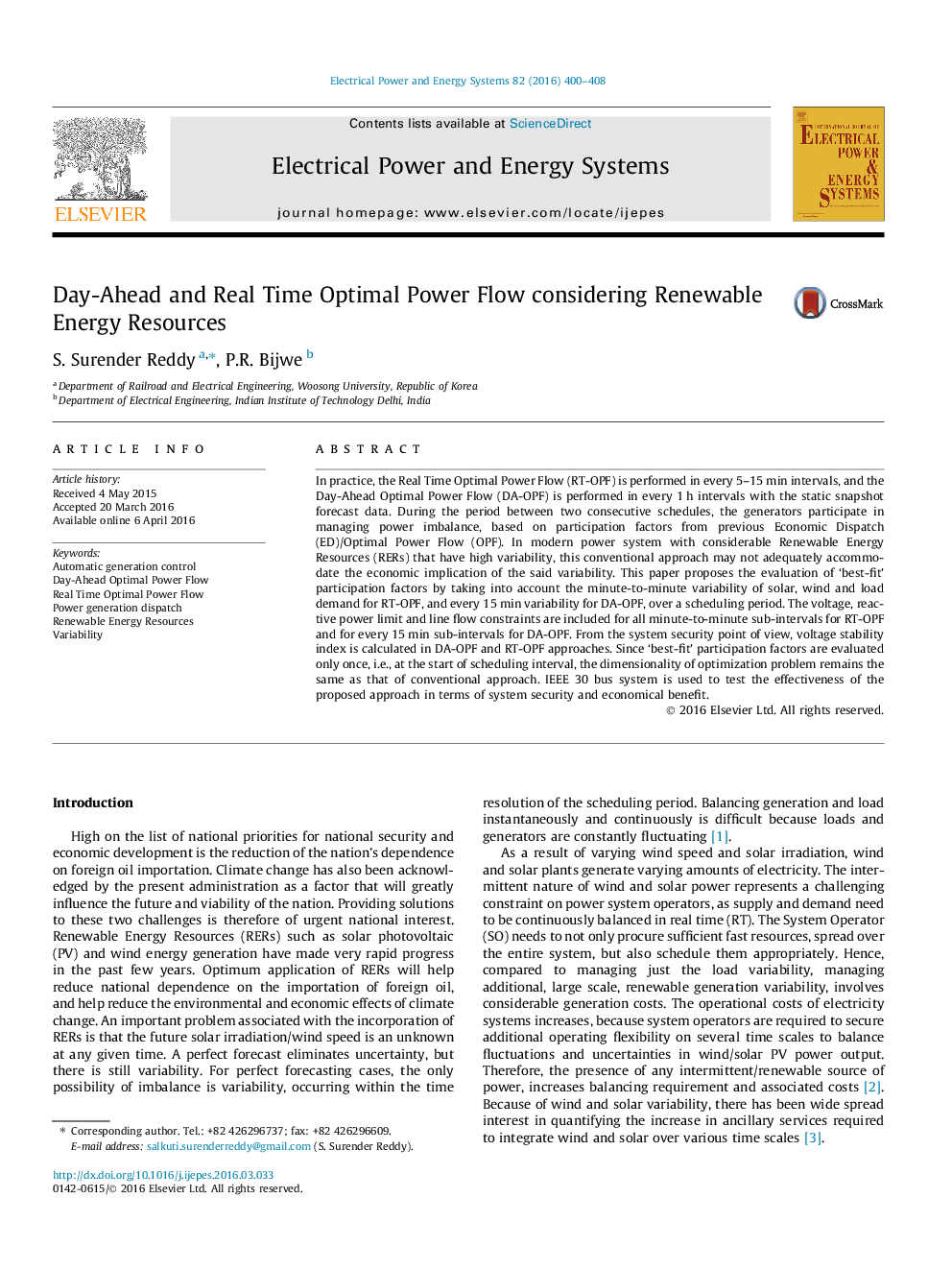| Article ID | Journal | Published Year | Pages | File Type |
|---|---|---|---|---|
| 398216 | International Journal of Electrical Power & Energy Systems | 2016 | 9 Pages |
•Evaluated best-fit participation factors considering minute-to-minute variability of solar, wind and load.•Proposes optimal, feasible solution by reducing cost of adjustment in real time.•Voltage, reactive power and line flow limits are included for minute-to-minute intervals.•From the system security point of view, voltage stability index is calculated.•Dimensionality of proposed approach remains same as that of conventional approach.
In practice, the Real Time Optimal Power Flow (RT-OPF) is performed in every 5–15 min intervals, and the Day-Ahead Optimal Power Flow (DA-OPF) is performed in every 1 h intervals with the static snapshot forecast data. During the period between two consecutive schedules, the generators participate in managing power imbalance, based on participation factors from previous Economic Dispatch (ED)/Optimal Power Flow (OPF). In modern power system with considerable Renewable Energy Resources (RERs) that have high variability, this conventional approach may not adequately accommodate the economic implication of the said variability. This paper proposes the evaluation of ‘best-fit’ participation factors by taking into account the minute-to-minute variability of solar, wind and load demand for RT-OPF, and every 15 min variability for DA-OPF, over a scheduling period. The voltage, reactive power limit and line flow constraints are included for all minute-to-minute sub-intervals for RT-OPF and for every 15 min sub-intervals for DA-OPF. From the system security point of view, voltage stability index is calculated in DA-OPF and RT-OPF approaches. Since ‘best-fit’ participation factors are evaluated only once, i.e., at the start of scheduling interval, the dimensionality of optimization problem remains the same as that of conventional approach. IEEE 30 bus system is used to test the effectiveness of the proposed approach in terms of system security and economical benefit.
